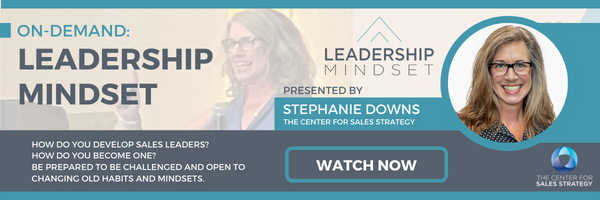
As a B2B senior sales leader, you know the pressure of driving consistent growth. But what happens when your once-thriving sales organization stalls?
Stagnant sales pipelines and flat revenue can be a symptom of deeper issues. This is a roadmap that equips you with insights, action items, and a clear path to transform your team into a growth machine.
Why Stagnation Sets In
Sales stagnation isn't a sudden illness—it's often a culmination of factors. Harvard Business Review identifies a few key culprits:
- Market Shifts: Have your target markets or customer needs changed? Are competitors offering innovative solutions you haven't addressed?
- Misaligned Strategy: Is your sales approach aligned with your overall business goals? Are marketing and sales working in silos?
We also teach several things at The Center for Sales Strategy that can be indicators of an unhealthy sales organization.
- Lack of a consistent and repeatable sales process: Does your entire team follow a sales process that is documented? Have you coached and trained your sellers to understand the expectations around each step in the process? Have you looked at where there are bottlenecks in the process by seller and, overall, in the organization?
- Lack of accountability: What does accountability look like in your sales organizations? Are your managers equipped to have consistent and productive conversations with sellers on performance and expectations?
- Not setting clear goals or expectations: Do you have one-on-one meetings with each seller and set clear goals and expectations around the key activities that you find to move the needle for new business? Are you not only setting expectations but measuring them and communicating to each seller, often?
- Not using technology to inform and understand the process: Your CRM will provide tremendous insights into the sales process. If you are not using technology OR if your team is not using the technology you have, this is vital to diagnosing issues and identifying opportunities.
Three-Pronged Approach to Reignite Your Sales Organization
Reimagine Your Strategy
- Review Your Target Persona: Ensure you are still segmenting and targeting properly.
- Customer Focus: Conduct in-depth customer research to understand their evolving needs and challenges.
- Competitive Analysis: Benchmark your offerings against competitors to identify differentiation opportunities.
- Data-Driven Decisions: Leverage sales data to identify high-performing segments and tailor strategies accordingly.
Empower Your Sales Force
- Skill Development: Sellers need to grow and evolve their skills and hone their talents. Focus on each seller’s talents and work with them directly to understand what skills they would like to focus on and agree on one goal that benefits the individual and the organization.
- Coaching and Mentorship: Provide ongoing coaching and mentorship to help each salesperson reach their full potential. This also applies to your sales leaders who crave more professional development.
- Motivation and Recognition: Foster a culture of high performance through incentives, recognition programs, and clear career paths.
Align Sales & Marketing
- Service Level Agreements (SLAs): Establish clear SLAs that define how both departments collaborate to generate qualified leads.
- Content Marketing: Develop effective content that educates prospects and positions your brand as a thought leader.
- Sales Enablement: Equip your sales team with marketing-generated content that empowers them to close deals more effectively.
Roadmap to Transformation: A Phased Approach
Transforming your sales organization won't happen overnight. Here's a roadmap to guide your journey:
- Phase 1: Diagnose and Plan (1-3 Months): Conduct a thorough sales audit to identify root causes of stagnation. Develop a clear growth strategy with measurable goals. Understand the talents of your team and how to leverage those for success.
- Phase 2: Implement and Train (3-6 Months): Implement your sales strategy, including process improvements, skills development programs, and marketing alignment initiatives.
- Phase 3: Monitor and Adapt (Ongoing): Track progress against your set goals. Continuously analyze data, adjust, and celebrate successes to maintain momentum.




